|
HOME: www.hiltonpond.org |
|||
THIS WEEK at HILTON POND Subscribe for free to our award-winning nature newsletter (Back to Preceding Week; on to Next Week) |
NEW YORK ROADSIDE REDUX Preface Although I usually hang tight at Hilton Pond Center in late August and early September to capture and band our predictable southbound wave of Ruby-throated Hummingbirds, this year we Hiltons had several good reasons to wander north--the principal one our desire to watch younger son Garry compete in Rochester NY as part of a drum corps with which he has been marching all summer. With his national competition as a focal point, we headed up I-77 on 29 August with plans for several stops.
All text, maps, charts & photos © Hilton Pond Center Our northbound route took us through the Keystone State of Pennsylvania--my birthplace and home to our beloved Pittsburgh Pirates. We try to take at least one trip to PNC Park each year and were pleased there was a night game scheduled against the Cincinnati Reds on the day we'd be stopping there. I got a new Josh Harrison #5 T-shirt to wear in honor of the game and we were happy prior to first pitch when this talented young 2014 All-Star received the Pirates' "Heart and Hustle Award." Josh responded with four stellar defensive plays at third base (above) and then--in the bottom of the eighth inning--tied the game 1-1 with a monster triple, soon thereafter scoring the winning run. "Josh Harrison for President (or at least MVP)" and "Let's Go Bucs!"
All text, maps, charts & photos © Hilton Pond Center Next morning we were up bright and early for a four-hour drive to Rochester where we spent all day Saturday and Sunday watching Drum Corps Associates competitors strut their stuff. Son Garry (above, center)--a dance teacher at River Bluff High in Lexington SC--performed this summer with Atlanta CV's color guard; his part of the show was dancing and twirling flags, rifles, and sabers. His corps finished a highly respectable sixth out of 14, and Garry got "Rookie of the Year" honors from Atlanta CV.
All text, maps, charts & photos © Hilton Pond Center Monday morning--Labor Day--we departed Rochester and drove northeast toward Morristown NY, paralleling the shore of Lake Ontario until we came to the headwaters of the St. Lawrence Seaway. En route we stopped only at a pet shop and later for lunch. We got to see many of the Thousand Islands (above)--of which there are actually more like 1,850 dotting this majestic river--and marveled at how green the landscape still was this late in the summer. (We were likewise impressed by near-absence of litter along New York's toll roads and interstates and on the backroads--very different from the trash-covered highways we are plagued with across South Carolina. And don't even get us started on ugly billboards that are missing in much of New York but are an unnecessary blight on the Carolina landscape.) We Hiltons hadn't been this far north since mid-June 2010--a trip I chronicled in Roadside Flora In Upstate New York; a description of my solo trip to the area back in 2006 is posted at Morristown NY: A Nature Travelogue.
All text, maps, charts & photos © Hilton Pond Center Our reason for traveling to Morristown was to visit Dr. Jim Shuman and wife Laurie (above left) in their riverside cottage that affords idyllic views of spectacular sunsets over Brockville--a Canadian hamlet lying just across the waterway. I've known Jim since we met at West Virginia's National Youth Science Camp in 1964, so all year in 2014 we've been celebrating the 50th anniversary of a friendship that has grown ever-closer. Jim also came to the New River Birding & Nature Festival in Fayette County WV in April after participating in my November 2013 Operation RubyThroat hummingbird expedition to Ujarrás, Costa Rica, where I was pleased to be able to show him first-hand what I've been doing in Central America the past ten years. Jim was in large part responsible for kindling my enthusiasm in birds in the mid-1970s, and many folks know where my avian pursuits have led me since then!
All text, maps, charts & photos © Hilton Pond Center Jim is recently retired with emeritus status from his position as education chair at St. Lawrence University, where he trained future teachers in the art of teaching. Our mutual interest in pedagogy and natural history means there's no shortage of topics for conversation when we get together. Jim was quite proud to show off his recently re-designed lily pond that hosted at least 15 two-inch Green Frogs, Lithobates (formerly Rana) clamitans--plus the five-inch female above. Green Frogs rival Bullfrogs, L. catesbeianus, in size and the species look quite similar at first glance; Bullfrogs, however, lack the prominent dorsolateral ridge that extends from behind the Green Frog's eye to its pelvic bump (as above). Incidentally, I called the individual in the photo a female because males typically have a tympanum (external ear drum) larger than the eye.
All text, maps, charts & photos © Hilton Pond Center The Hiltons spent several highly enjoyable days with the Shumans, watching the catfish get acclimated to their new home, riding up and down the river in Cap'n Jim's motorboat, and even going across the border into Ontario for a sumptuous meal in the old Brigadoon restaurant--it being elegantly adorned with artifacts depicting Canada's ties to England. On our final full day in New York I even had the pleasure of giving a presentation about my Neotropical hummingbird research for the Ecology 222 class at Clarkson University in Potsdam NY (above). The invitation to speak came from Dr. Tom Langen, who also just happened to be a National Youth Science Camp delegate from Indiana in 1980. Nothing like an NYSC mini-reunion! Following requisite hugs and farewells, the Hiltons departed the Shuman residence on 4 September and moved southward down I-81, spending the night in Winchester VA. We rolled in at Hilton Pond late afternoon on the 5th--just in time to set traps and capture 11 rather rotund Ruby-throated Hummingbirds apparently ready to embark on southbound journeys of their own. (Next day I banded 14 more RTHU for a two-day total of 25!) Before leaving Upstate New York, however, Jim and I walked his neighborhood byways, trying to identify and photograph roadside plants--a far more lush and diverse assortment than anything we have around Hilton Pond Center. My photos of some of those New York flora--native and otherwise--are offered below, with mention of their pollinators. --Bill Hilton Jr. Flora at Morristown NY
All text, maps, charts & photos © Hilton Pond Center Without doubt, the most abundant late summer wildflowers around Morristown in Upstate New York were various Goldenrods, Solidago spp. (Jim Shuman nicknamed them "school flowers" because their blooms signal summer vacation is over.) These under-appreciated and sometimes maligned native species--no, Goldenrod pollen does NOT cause autumn hay fever!--literally blanketed the landscape anywhere there was a highway shoulder or old field. (above). Such expanses of rich yellow were breathtaking, especially in late afternoon when a setting sun makes everything even more golden. My joy over all this Goldenrod splendor was later tempered slightly when I finally learned Solidago has nothing to do with "Sol," the Sun--but comes from Latin roots meaning a "herb to heal wounds." Even worse, I also discovered devious botanists have tampered with time-honored taxonomy and--gasp!--shifted several Goldenrods into different genera.
All text, maps, charts & photos © Hilton Pond Center Most Goldenrods we saw around Morristown were relatively tall species with nodding flower heads (above), the most common being Canada Goldenrod, S. altissima. There are likely 50-plus kinds of Goldenrod in North America--many with nodding inflorescence--so we undoubtedly observed but did not identify several of them.
All text, maps, charts & photos © Hilton Pond Center We did find one small patch of very distinctive Goldenrod (above) whose flowers didn't nod but grew in a flat, umbel-like configuration. A quick check of the trusty old field guide told us this was Lance-leafed Goldenrod, Solidago graminifolia, now classified--if you can trust the taxonomists--as Euthamia graminifolia. (Stiff Goldenrod, which we did not observe, is now Oligoneuron rigidum. The rest of the Goldenrods, we hope, will ever remain in Solidago.) Like all sticky-pollen Solidagos, Lance-leafed Goldenrod is pollinated by a wide variety of insects from beetles to bugs and from butterflies to bees, flies, and wasps.
All text, maps, charts & photos © Hilton Pond Center With Goldenrods one needs a hand lens to know why botanists place them in the Sunflower Family (Asteraceae). Members of this group have two kinds of flowers: Sterile ray flowers that some folks mistake for petals, and a cluster of tiny disk flowers that make nectar and produce seeds; the much-more-noticeable ray flowers serve as attractants that lead pollinators toward the center of the inflorescence. Various composite flowers can be found spring through fall--most often in sun-drenched habitats--but reach their prime in late summer. In addition to yellow as in Goldenrod, they come in many hues from blue to red to pink to white, so we weren't surprised in Morristown to find the appropriately named New York Aster, Symphyotrichum novi-belgii (above), a purple species formerly known as Aster novi-belgii. (New York State was once known as New Belgium, whence the hyphenated epithet.) In the horticultural trade the plant is called "Michaelmas Daisy." Incidentally, New York Asters are quite similar to New England Asters, Symphyotrichum novae-angliae, but--as shown below--the ray flowers in the plants we found were paddle-shaped (not narrow and pointed), confirming our identification.
All text, maps, charts & photos © Hilton Pond Center New York Asters are native to eastern North America east of the Appalachians from Canada to the Carolinas. Although they grow wild, these brightly colored blossoms have been so coveted by gardeners there are now hundreds of named cultivars in countless shades. (Note on one of the ray flowers above a tiny shiny Ebony Beetle--one of this aster's primary pollinators.)
All text, maps, charts & photos © Hilton Pond Center Another roadside composite on the blue side of the spectrum was the familiar Chickory, Cichorium intybus (above). This is one of those European imports that has adapted very well to North America (and Australia); whether it is a true invasive that crowds out this country's native species is subject to debate. Parts of the plant are prepared in numerous ways for ethnic dishes around the world, so if you have too much Chicory on your property keep it under control by harvesting and cooking the leaves for salads or by digging its roots for a coffee substitute or additive. Chickory flowers do not self-pollinate and require the usual assemblage of insects, typically bees, flies, and beetles.
All text, maps, charts & photos © Hilton Pond Center Another obvious composite we found along the road near Morristown was one of the Hawkweeds, Hieracium sp. There are about a jillion species or subspecies of Hawkweed (actually, closer to 10,000), so our roadside find truly was what even experienced botanists call a DYC--a "damned yellow composite" that can be extremely hard to identify. (For the record, there are also DWCs, DPCs, and probably other D?Cs.) The plant we found had a rather small flower for a Hawkweed--only a half-inch across--but it still nicely illustrated its composite make-up. At lower left in the photo above is Hawkweed's seed head--a more or less globular structure in which several fine hairs attached to each seed provide a wind-catching mechanism that aids in dispersal.
All text, maps, charts & photos © Hilton Pond Center One other Aster Family member we encountered was indeed a DWC--a white one (above) that we could identify at least to genus: Eupatorium. These composites are collectively known as Bonesets--not because herbalists use them to set broken bones but because an extract was used to treat dengue (breakbone) fever. We felt pretty strongly this was Common Boneset, E. perfoliatum, whose stems grow through oppositely spaced leaves. Again, without a hand lens it is difficult to differentiate between the ray flowers and the disk flowers of this particular plant, but it definitely was a composite.
All text, maps, charts & photos © Hilton Pond Center We suspect one reason roadside flora are so abundant in the Morristown area is its proximity to the St. Lawrence Seaway. Jim Shuman's riverside cottage is less than ten feet above the high water mark of this waterway; abundant moisture--and rich riparian soil--are quite conducive to vegetation. In addition to draining the Great Lakes, the St. Lawrence receives fresh water from many tributaries as it flows toward the North Atlantic. Some of these inlets look very much like brackish estuaries that empty into marine habitats. Instead of sea grasses, however, we encountered a sea of Cattails (above), plus floating rafts of Water Lilies.
All text, maps, charts & photos © Hilton Pond Center Most prominent were six-inch-wide American White Water Lilies, Nymphaea odorata, whose shiny round leaves float flat on the water. As its common name suggests, this is a native plant; it prefers colder waters, flourishes in the northeastern U.S. and Canada, and was introduced in Washington State, Oregon, and Montana where it competes with native lilies. You can tell the photo above was taken early in the day because this lily usually closes up by noon or so. This species is also called Fragrant or Sweet-scented Water Lily for its perfumed sugary nectar that attracts bees, beetles, and flies.
All text, maps, charts & photos © Hilton Pond Center One roadside plant we instantly recognized but fortunately was not very plentiful was Common or Great Mullein, Verbascum thapsus, a non-native whose presence often indicates disturbed soils. Indeed, the few mulleins we found were growing primarily in micro-habitats that contained gravel or that had been plowed up recently. The second-year floral stalk of Common Mullein (above) sprouts from a first-year basal rosette of very fuzzy pale green leaves.
All text, maps, charts & photos © Hilton Pond Center Common Mullein's five-petaled yellow flower has an interesting configuration in which there are three short upper stamens and two longer lower ones (visible on the top flower in the photo above); the pistil is green. The flowers open before dawn and close about noon; they are known to self-pollinate but more effective cross-pollination apparently occurs only during visits by short- and long-tongued bees.
All text, maps, charts & photos © Hilton Pond Center Our 2010 visit to Morristown was in June, right when Bladder Campion, Silene vulgaris, was in full bloom--as shown by our file photo above. This invasive is a dietary staple in Mediterranean countries where locals eat the leaves and shoots in salads and gazpacho soups. Its downward-hanging white blossoms with delicate pink venation are pollinated--at least in Europe--by nectar-foraging moths that also happen to lay eggs in the flower head; their caterpillars later dine on campion seeds, greatly reducing plant productivity.
All text, maps, charts & photos © Hilton Pond Center Although we did photograph Bladder Campion flowers in June, this year our September visit allowed us to see what comes of the blossom. Instead of hanging down, each half-inch-wide bladder turned upward (above), revealing dozens of tiny blackberry-like seeds. It was quite apparent these introduced Bladder Campions were getting fertilized, and that any local seed predators weren't making much, if any, impact.
All text, maps, charts & photos © Hilton Pond Center Bladder Campion wasn't the only plant showing pollination results during late summer visit to Upstate New York. In fact, right beside the Shuman's driveway was a large red fruit that looked good enough to eat--which is exactly what we did right after we took the photo above. This pinkish-red hemisphere was Thimbleberry, Rubus parviflorus, not really a berry but an aggregate of tiny, fleshy drupelets, each containing a seed. Unlike closely related Blackberries whose bases stay attached when picked, Thimbleberry comes completely away from its parent vine; this leaves a thimble-like depression in the fruit's base--hence its name. Thimbleberries arise from a large white flower pollinated by native bees, Honeybees, Bumblebees, and possibly diurnal Yellow-banded Sphinx Moths. Larva of the latter use the plant's leaves as a food source.
All text, maps, charts & photos © Hilton Pond Center Fruits on many native plants turn red as they ripen. This makes sense because most of nature is green and red is green's most contrasting color. Thus, red is easy for frugivores--fruit eaters and potential disseminators--to see. (It's no accident UNRIPE fruit is usually green, making it harder to find before seeds are mature.) We suspect fruit-eating birds will have no trouble spotting the shiny red berries above--a bounty produced by a shrub with the misleading names of Highbush Cranberry or American Cranberrybush. It was actually a viburnum: Viburnum opulus americanum (formerly V. trilobum). What's confusing is that this shrub is certainly NOT a cranberry (Vaccinium spp.) and that the same species grows in Europe but is simply called Viburnum opulus. Most botanists believe V. o. americanum is indeed a native subspecies, but we'll bet there are some escaped European relatives mixed in here and there. As in most viburnums, this plant has a large white inflorescence especially attractive to butterflies that serve as pollinators. Wind-pollination also occurs.
All text, maps, charts & photos © Hilton Pond Center Despite the crimson shades of Thimbleberry and Highbush Cranberry, not all mature fruits are red--as illustrated quite nicely by brightly colored berries of Silky or Swamp Dogwood, Cornus amomum (above). These fruits--which are actually drupes (fleshy fruits with a hard pit)--start out white and turn deep cobalt blue. A medium-sized native shrub, Silky Dogwood occurs in eastern North America from Newfoundland to Florida. Twigs and leaf undersides are covered by silken hairs, providing the name. Clusters of small white flowers are pollinated by bees and beetles; the foliage is a favored food of larvae of the giant Cecropia moth.
All text, maps, charts & photos © Hilton Pond Center We found plenty of shrubs and herbaceous plants as we strolled around Morristown, but the most common roadside tree appeared to be an evergreen with overlapping scaly leaves and yellow cones (above). This could be none other than Eastern or Northern White Cedar, Thuja occidentalis, a tree whose natural range was tightly restricted to New England, southeastern Canada, and Great Lakes States AND in higher elevations down the Appalachian Ridge into North Carolina and Tennessee. These days, however, cultivars are available in the horticultural trade as Arborvitae--much overused in landscaping as a windbreak and privacy fence. Eastern White Cedar is NOT a true cedar (Cedrus spp.) nor is it related to the Eastern Red Cedar, Juniperus virginiana (whose name indicates it's actually a juniper). Apparently the longest-lived tree species in eastern North America, Eastern White Cedars in Ontario have been aged at 1,650 years.
All text, maps, charts & photos © Hilton Pond Center Plenty of deciduous trees also grew along the road, but the one we thought had the most pleasing leaf shape was Northern Red Oak, Quercus rubra (above). This is a more northerly species that barely gets into the South Carolina Piedmont; it is a fast-growing but long-lived oak that may reach the ripe old age of 500 years. In pre-Columbian days Northern Red Oaks were a dominant part of the chestnut-oak-hickory forest, where elderly individuals grew to heights of approaching 150 feet and had circumferences of 25-30 feet. Those days are long-gone, of course, with giant Northern Red Oaks logged out for firewood or indoor furniture, and only a handful of giant specimen trees remain. In the 21st century mature Northern Red Oaks still play an important ecological role, providing nesting sites for Neotropical migrants and yielding acorns--which take two years on the tree to develop--that provide valuable sustenance for birds, White-tailed deer, and various squirrels.
All text, maps, charts & photos © Hilton Pond Center It was just the first week in September when we visited the Shumans, but we were pretty far north in the St. Lawrence River Valley. That meant all those Northern Red Oak leaves would soon be turning yellow and falling from the trees. Despite cold temperatures and snow cover, some local vegetation will persist all winter, such as the striking orange lichen (above) we found growing on a granitic outcropping. This unidentified species grew nearly flat on rocks and old walls--which over time the lichen will break down into soil.
All text, maps, charts & photos © Hilton Pond Center As we made our way back to the Shuman cottage we came across one last brightly colored blossom--none other than Spotted Jewelweed, Impatiens capensis (above). It was appropriate this was our final New York native plant, for late-flowering jewelweed provides copious nectar that helps fuel southbound Ruby-throated Hummingbirds. It's not that jewelweed helps that much with actual migration, but it DOES provide carbs hummers need to catch all those tiny insects they convert to fat for long-distance flight. (HINT: Spotted Jewelweed would be a great plant for you to add to your backyard hummingbird habitat.)
Orange lichen, orange jewelweed, and--on our final evening along the St. Lawrence Seaway--a brilliant orange sunset over the slow-flowing river, as seen from an easy chair on the Shuman's back porch (above). It was great to visit with Laurie and Jim, to take in a Pirates game, to watch Garry and his drum corps perform, to lecture to budding young ecologists, and once again to observe and photograph the floral feast we found along the back roads of Morristown in Upstate New York. All text, maps, charts & photos © Hilton Pond Center
All contributions are tax-deductible on your |
|---|
This is especially the case when it comes to activities of our beloved and incredibly amazing granddaughters, McKinley Ballard Hilton and Hadley Reid Hilton (left). Three-year-old McKinley helps band birds when she visits Hilton Pond Center, but Hadley's latest claim to fame was being able to stand unassisted and take some steps this week for her first birthday. Happy Birthday, Hadley! |
|
"This Week at Hilton Pond" is written and photographed by Dr. Bill Hilton Jr., executive director of Hilton Pond Center for Piedmont Natural History.
|
|
|
Please refer "This Week at Hilton Pond" to others by clicking on this button: |
Comments or questions about this week's installment? Send an E-mail to INFO. (Be sure to scroll down for a tally of birds banded/recaptured during the period, plus other nature notes.) |



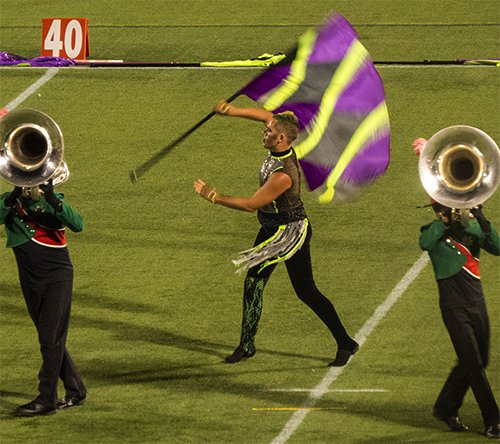
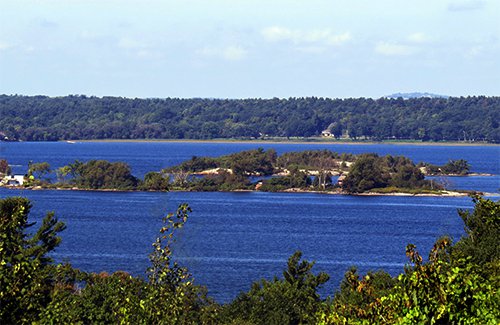

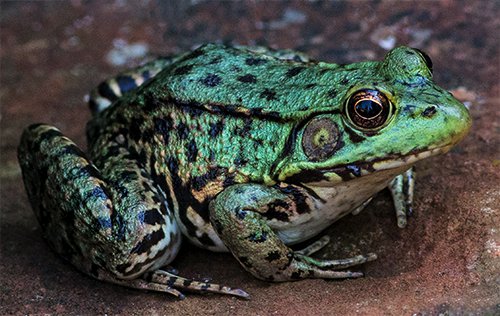
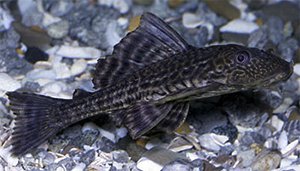 And speaking of aquatic organisms, I heard several weeks ago from Jim his geriatric
And speaking of aquatic organisms, I heard several weeks ago from Jim his geriatric 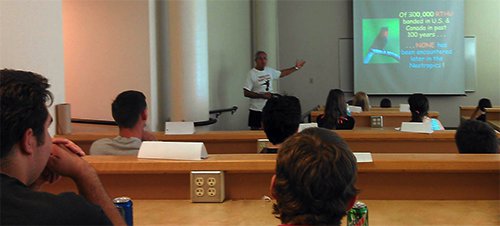
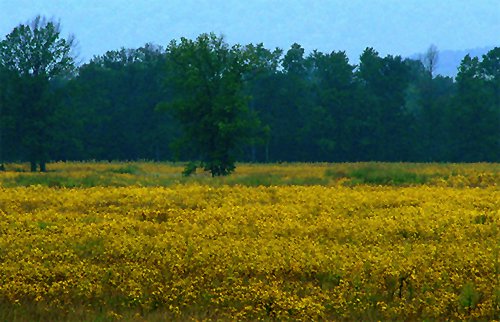
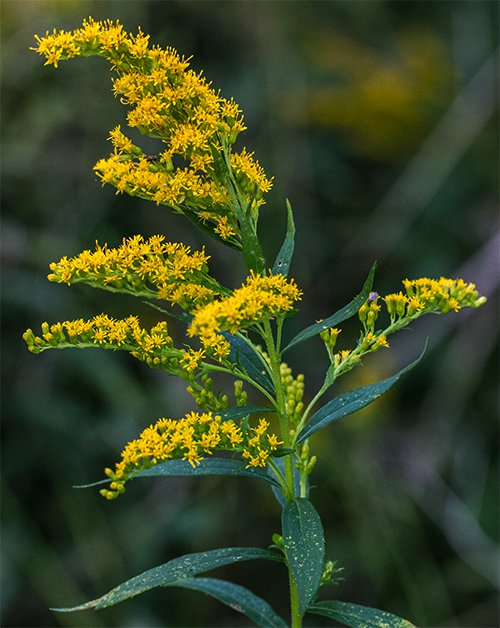

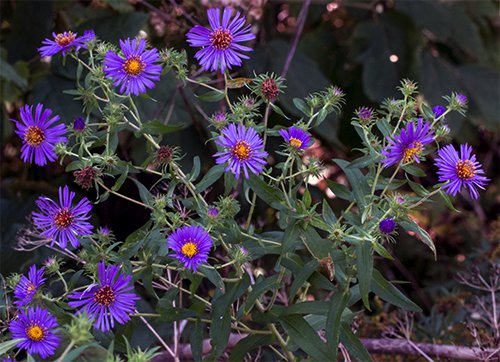
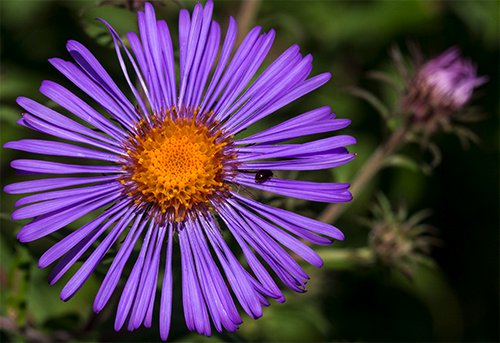
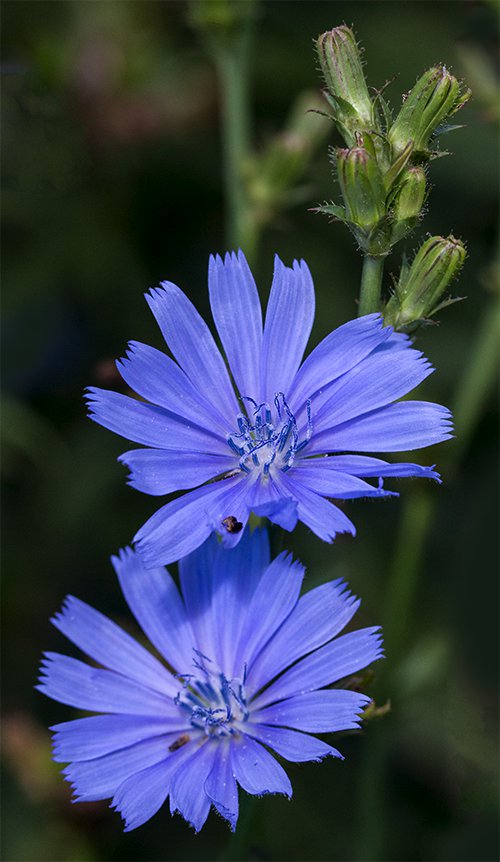

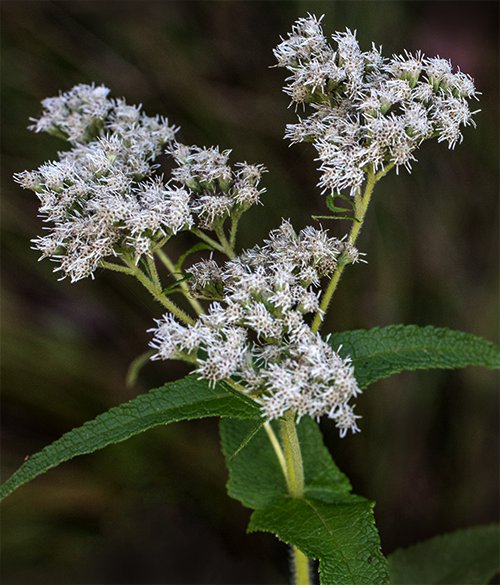
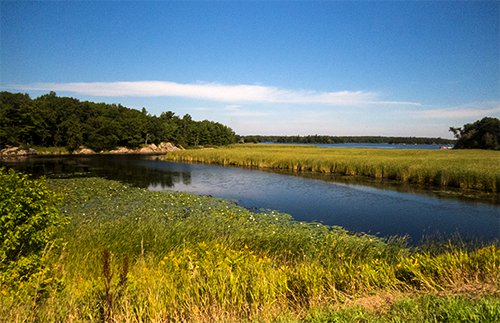
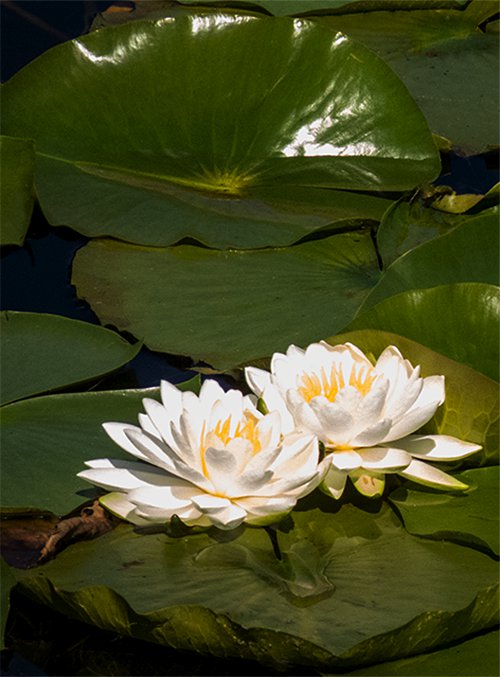
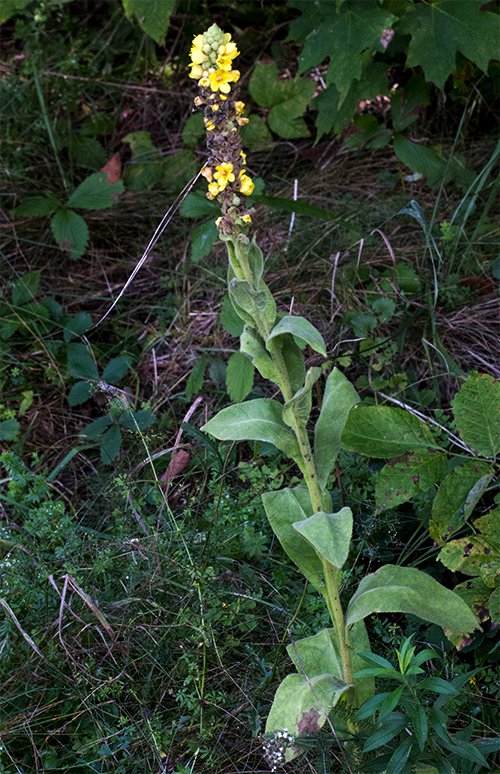
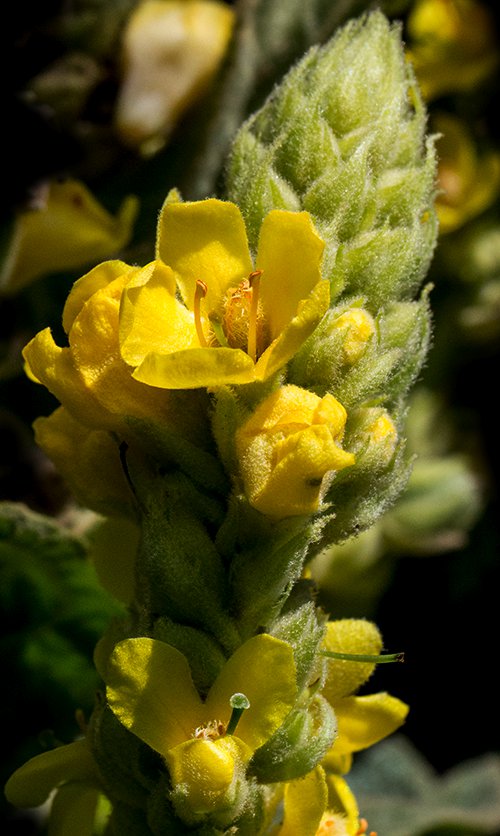
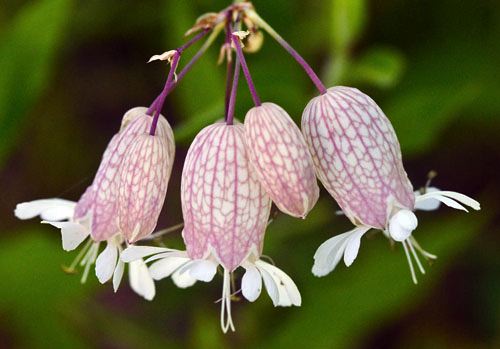
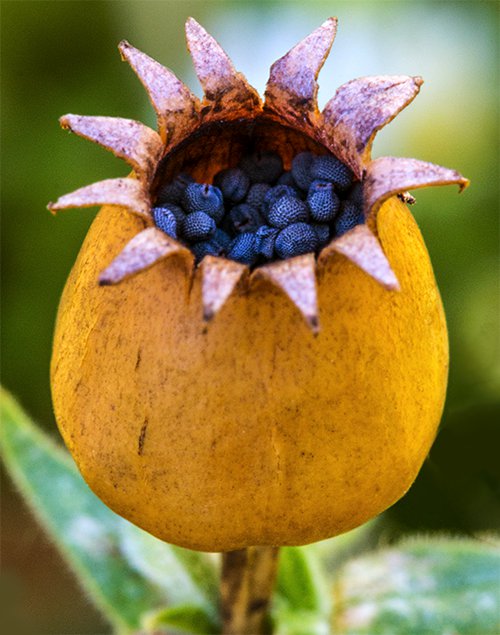

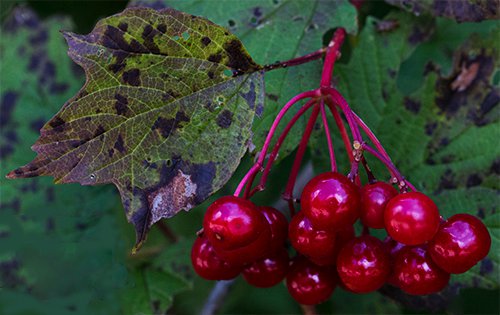
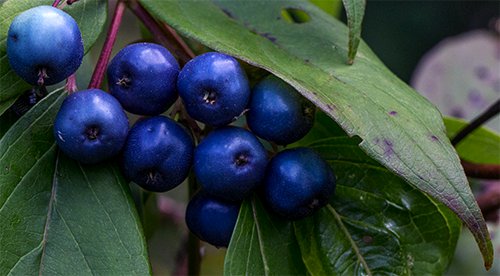


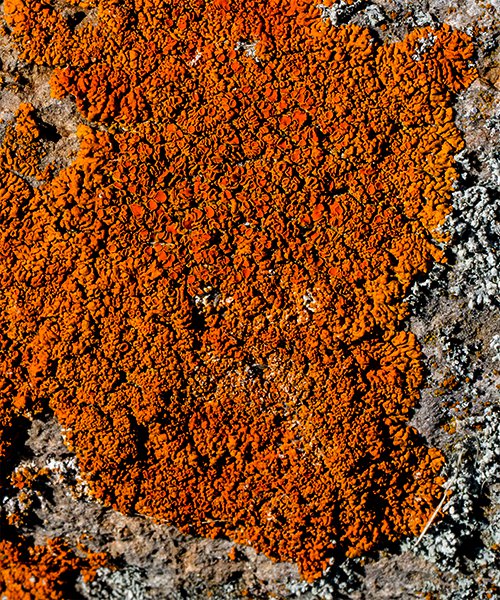
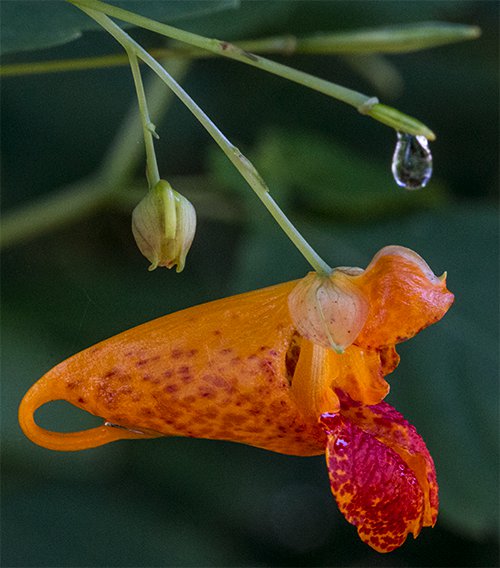
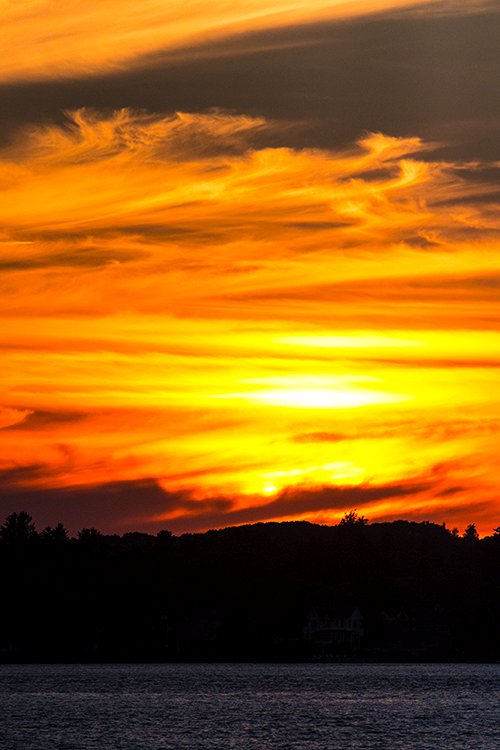
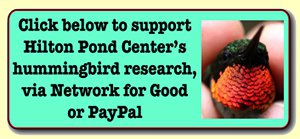








 Please report your
Please report your